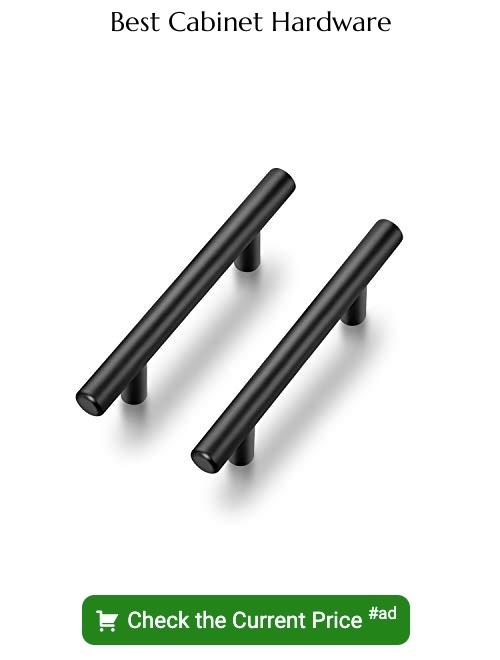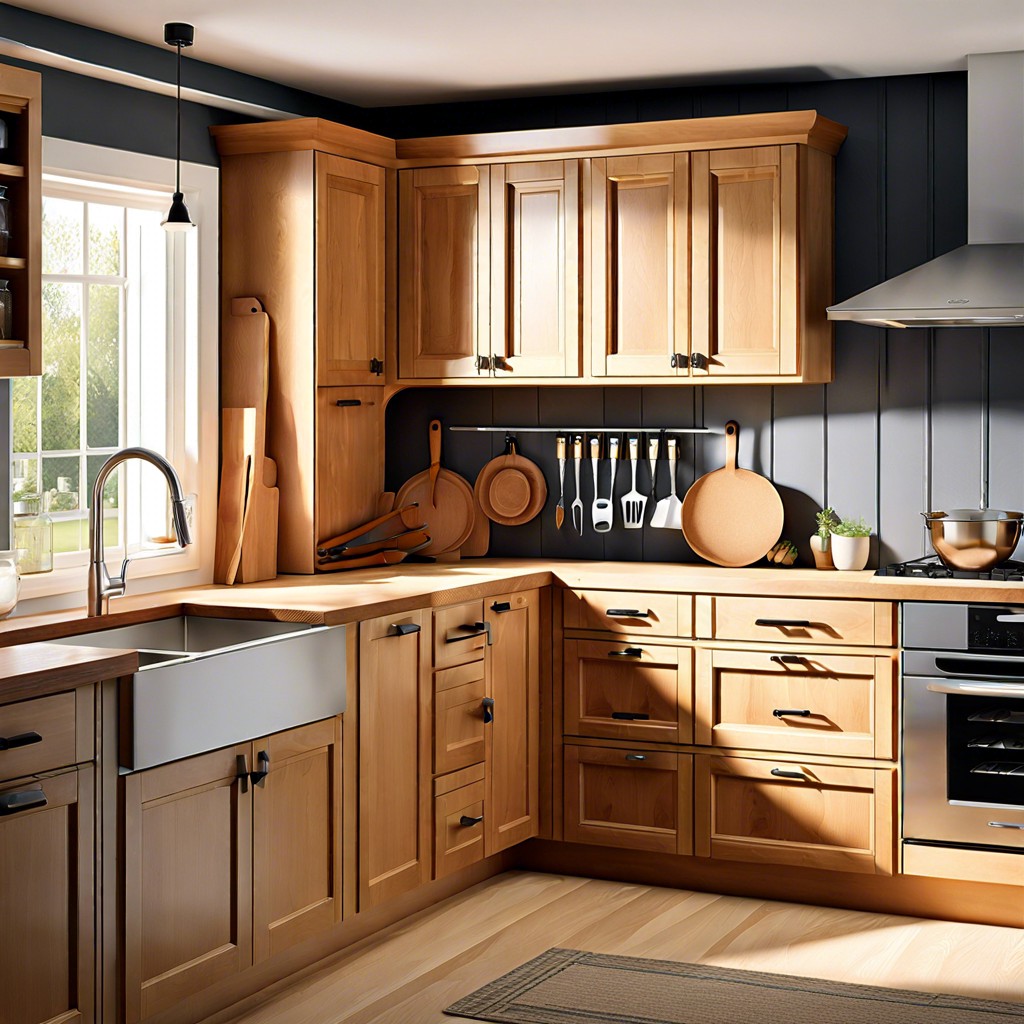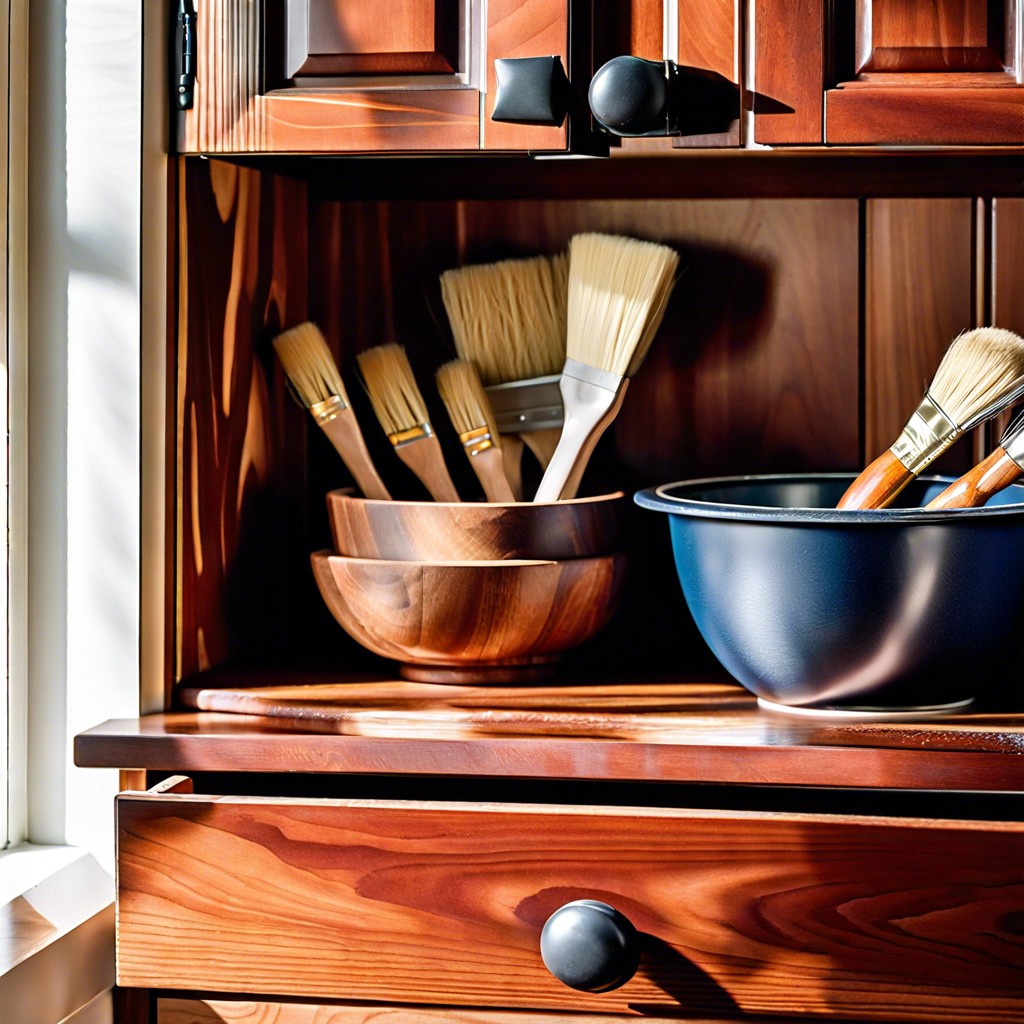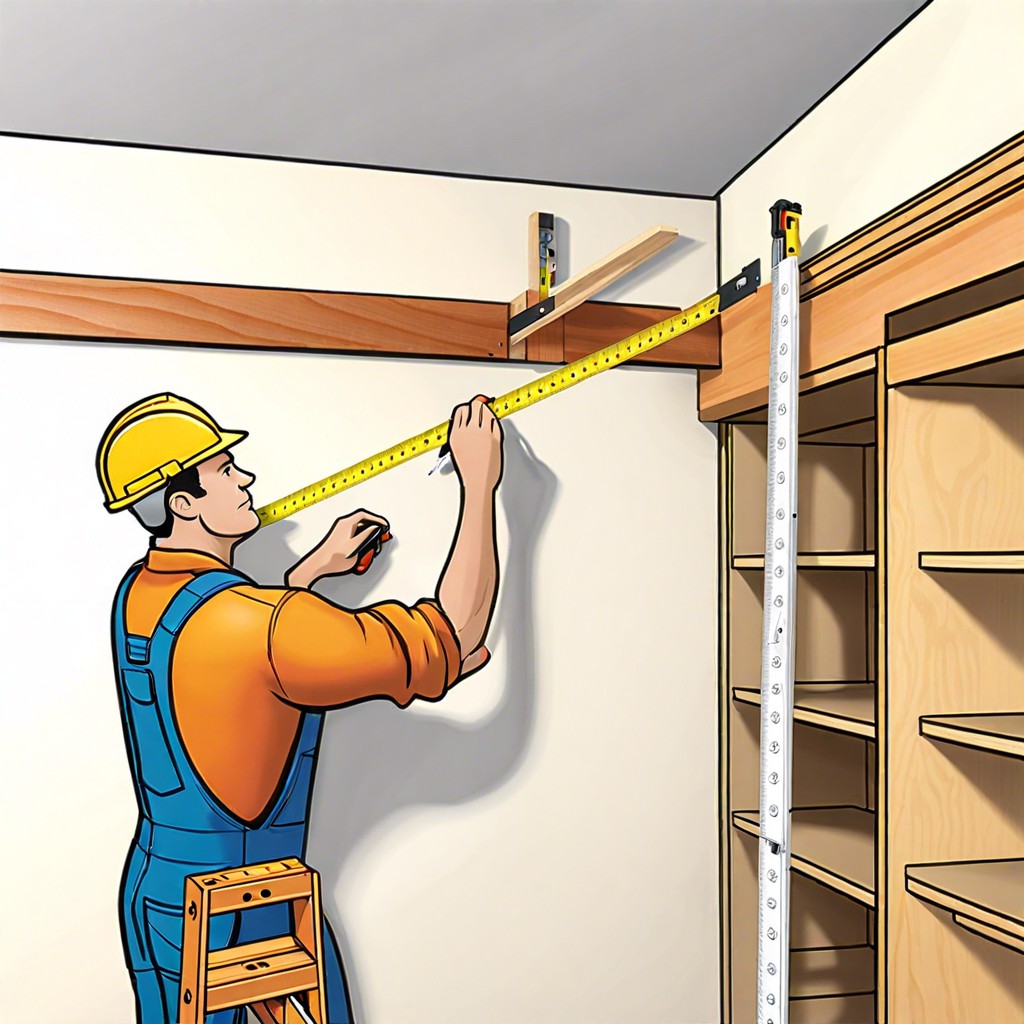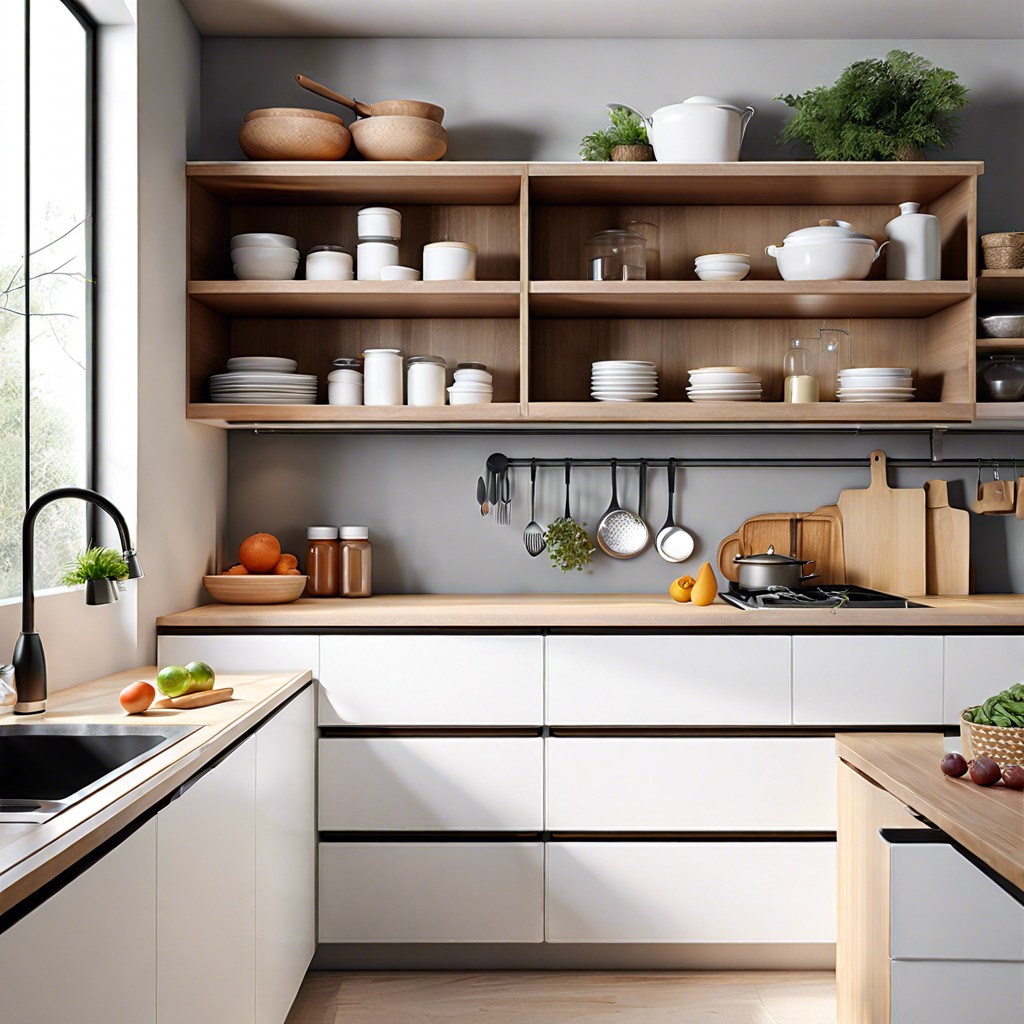Last updated on
Diving into the high-stakes debate of frameless versus inset cabinets, this article dissects their unique offerings and shortcomings, because knowing the key differences can tilt the scales towards a more informed and satisfying pick.
Diving right into the heart of the matter, frameless and inset cabinets offer different aesthetic and functional benefits for your kitchen’s design.
Frameless cabinets, also known as European-style cabinets, feature a seamless, contemporary look with maximum storage space.
On the other hand, inset cabinets showcase an elegant, classic design with the cabinet doors fitting inside the frame but tend to have reduced storage capacity.
Knowing the specifics of each style can simplify your decision-making process.
This article will efficiently break down everything from construction to cost implications, design flexibility and installation requirements, ensuring you have all the information needed to make the best choice for your dream kitchen.
Key takeaways:
- Frameless cabinets offer a seamless, contemporary look with maximum storage space.
- Inset cabinets showcase an elegant, classic design with reduced storage capacity.
- Frameless cabinets provide increased storage space, design flexibility, and easier installation.
- Inset cabinets offer precise alignment, durability, and customization options.
- Frameless cabinets tend to be more cost-effective, while inset cabinets are more expensive but have a timeless charm.
What's Inside
Definition of Frameless Cabinets
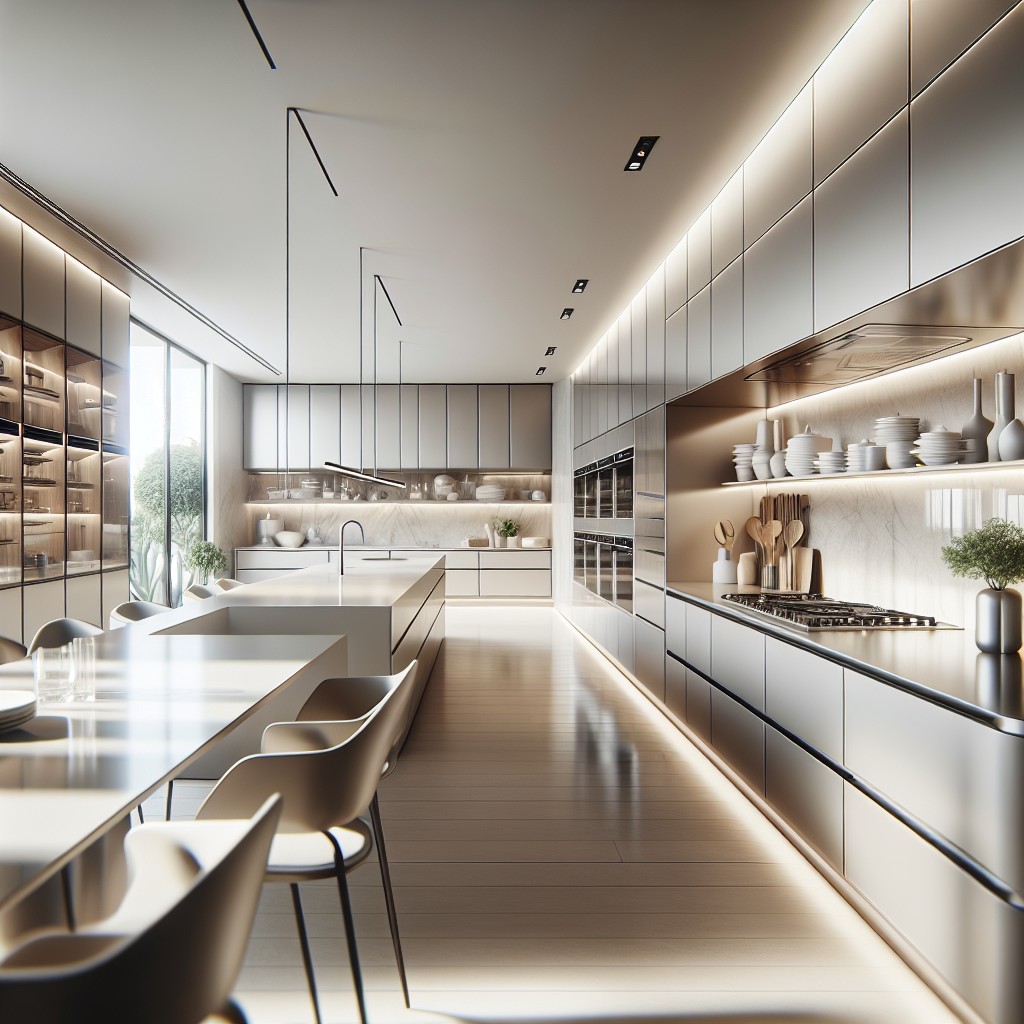
Moving straight ahead to what ‘frameless’ entails, this type of cabinet comes without a face frame. The door hinges are typically hidden, giving the front of the cabinet a sleek and modern finish.
Coined from the term ‘European-style,’ this cabinetry design utilizes full-overlay doors that cover the entire cabinet box. Thus, an unbroken, streamlined facade with nearly no visible gaps or seams is achieved.
Key distinguishing factors include larger drawer fronts and increased storage space due to the absence of a frame. It is worth noting, however, that their construction largely depends on the thickness of the material used due to the lack of a reinforcing frame.
Each attribute serves a unique purpose, producing a cabinet style that’s both aesthetically pleasing and functional.
Construction of Frameless Cabinets

In essence, frameless cabinets, often called European style cabinets, are constructed without a face frame. They rely on a thicker box construction for durability. The doors attach directly to the cabinet box through hidden hinges, providing a sleek and modern look.
The absence of the frame provides full access to the storage area, maximizing the usable space. For additional reinforcement, particularly in larger cabinets, a back panel is usually attached. To ensure durability, high-quality materials like plywood are often used.
Advantages of Frameless Cabinets
One notable advantage is the increased storage space. Frameless cabinets, owing to their design, deliver up to 10% more usable space than their inset counterparts. With no face frame obstructing, accessing your items becomes much simpler. This design is particularly beneficial in smaller kitchens where every inch counts.
Frameless cabinets offer design flexibility. They complement contemporary, modern aesthetics well due to their sleek, seamless appearance. These cabinets also allow full overlay doors, making them an attractive option for those seeking a clean, streamlined look.
Ease of installation is another positive aspect. Frameless cabinets are less complex structurally, making them less time-consuming and easier to install than traditional inset cabinets.
Finally, versatility makes frameless cabinets an attractive choice. Due to the simplicity of design, these cabinets pair well with a variety of door styles and finishes, giving you a wide range of styles to choose from.
Disadvantages of Frameless Cabinets
While frameless cabinets serve multiple purposes and offer a modern look, they also come with certain drawbacks. Most notably, they lack the interior frame that can enhance the structure’s stability. This absence can lead to potential sagging or warping over time, especially when holding heavier items.
Furthermore, the absence of the face frame results in thinner cabinet sides, making them more susceptible to damage during installation or relocation. An added disadvantage is the lack of historic authenticity, which may be an essential factor for connoisseurs of traditional design.
Last but not least, in frameless cabinets hinge adjustment for door alignment can be a challenge. This is because there’s less adjusting room provided which can make maintenance slightly more daunting. These factors are worth considering when choosing frameless cabinetry.
Styles of Frameless Cabinets
Much like their names suggest, frameless cabinets provide an unobstructed view, lending an overarching contemporary theme to your kitchen decor. The options are endless – you can opt for sleek slabs or shaker-style doors, or even frosted glass doors for an airy feel.
The hardware too can add character to these cabinets; concealed hinges work well for a more streamlined look, while visible, bold hardware can add a touch of glam. For a pop of color, consider lacquered cabinets in bold hues. Remember that in this style, less is more. Keep the look clean and minimalist.
Whether you opt for a high-gloss finish for a modern look, or matte-finished wood for warmth, frameless cabinets offer plenty of versatility.
Practical Utilisation of Frameless Cabinets
When it comes to modern interior design, frameless cabinets excel, bringing a sleek, clean linear look to your kitchen or bathroom. With their absence of face frames, they efficiently maximize storage space. Full door overlays create an uninterrupted facade, making them perfect for small areas as they give an impression of more space.
These cabinets cater to easy accessibility. With no center stiles obstruction, larger items like pots, pans, or appliances can be stored with ease. The interior is easily customizable, with adjustable shelves and pull-outs, adding to the functionality.
Being easy to install, they are compatible with almost any door style, be it glass, solid wood, or laminated. They work best with contemporary design themes, but can also fit into transitional styles given the right finish and door style.
Definition of Inset Cabinets
Inset cabinets owe their name to the way their doors and drawers fit, seamlessly settled into the cabinet frame rather than resting on top. This design imparts a distinctive aesthetic, hinting at a classic, vintage vibe.
Here are quick points to grasp this cabinetry style:
- Flush Fit: Doors and drawers align with the cabinet frame, creating a smooth and uniform appearance.
- Vintage Appeal: This style mirrors meticulous craftsmanship seen in traditional or vintage kitchens.
- Precision Required: These cabinets require precision during installation, as the door must fit perfectly within the frame to function properly.
- Customizable: Like their counterparts, inset cabinets come in a variety of design and finish options.
Remember, inset cabinets may not be the best fit for every space, consider factors like your kitchen’s humidity levels and the desired aesthetic before making a choice.
Construction of Inset Cabinets
When it comes to crafting inset cabinets, meticulous attention to detail is key. Because the doors and drawers sit flush with the frame, precision is a must. No room for imperfections, the measurements must be precise, and the installation requires a good deal of expertise.
Think of a box with a face frame attached; this is the fundamental structure of an inset cabinet. The face frame, similar to an overlaid door or drawer, encloses the cabinet box. However, instead of concealing the frame completely as in a full overlay, or partially as in a standard overlay, the door sits inside the face frame.
Quality joinery methods, like dovetail or dowel joints, are commonly employed to forge a sturdy connection. This ensures the door lasts longer and withstands daily use.
By utilising various rails, stiles, and panels, inset cabinets can take on a diverse range of stylistic appearances. This flexibility allows for a host of creative options in kitchen design, from the common Shaker-style to intricate bead and flush insets.
Remember, due to the precision necessary for a perfect fit, the wooden components should ideally possess a minimal response to climatic changes. This means avoiding wood that drastically expands or contracts due to humidity shifts, to maintain the seamless look of your cabinets year-round.
Advantages of Inset Cabinets
With an unmatchable charm and a classic feel, inset cabinets often top the list for homeowners aiming for a touch of luxury. Able to blend seamlessly in both traditional and modern kitchens, these cabinets present a flawless, smooth cabinetry line. This is due to the doors and drawers sitting directly inside the cabinet frame, ensuring a seamless aesthetic.
Durability is another strong point for inset cabinetry. Offering a sturdy structure, these cabinets have their doors securely mounted onto the frame, reducing the chances of wear and tear.
Don’t forget that inset cabinets offer precise alignment. Each door and drawer is crafted meticulously to align perfectly with the frame. This detailed focus adds a level of sophistication to the overall kitchen design.
Finally, customization options are aplenty including bead and non-bead options, various finishes, and more. These allow homeowners to tailor their kitchen to their specific needs and taste.
Disadvantages of Inset Cabinets
While inset cabinets bring elegance to your home, several aspects may pose challenges for homeowners. One of the main drawbacks is the higher cost associated with their complex construction and installation process. Furthermore, due to the precise craftsmanship required to ensure that the doors and drawers fit perfectly within the cabinet frames, the manufacturing process can be time-consuming.
From a practical perspective, inset cabinets tend to offer less storage space. The design, in which the doors sit flush with the cabinet box, often results in slightly smaller storage compartments compared to frameless or traditional cabinet styles.
There may also be potential issues with wood movement. If the cabinets are made from real wood, changes in climate and humidity levels can cause the wood to expand or contract, potentially making the doors or drawers difficult to open and close over time.
Last but not least, the hardware options for inset cabinets may also be limited. The need for precision fitting of the doors within the cabinet box restricts the choice of hinges, often necessitating more expensive, specialised hardware.
Styles of Inset Cabinets
Inset cabinets offer a great range of style flexibility, stretching from traditional to contemporary. The Beaded style is a common choice for traditional designs, which adds a decorative bead within the frame for an extra level of detail. The Flush style, on the other hand, offers sleek lines and a modern aesthetic, which matches well with minimalistic or modern interiors. Finally, there’s the Shaker style, a classic and versatile design that fits almost any interior style with its clean lines and uncluttered appearance. These options provide an ample opportunity to synthesize design aspirations with functional needs. Always remember to consider the overall design style of your space while selecting the perfect inset cabinetry style.
Practical Utilisation of Inset Cabinets
Inset cabinets boast a classic and timeless design that, although often found in traditional and vintage-themed kitchens, can adapt well to other styles too. One of their most significant utilitarian advantages is their perfect alignment, leading to a smooth, seamless finish. This is due to the cabinet doors and drawer fronts set inside the cabinet box, unlike other types where they are attached over it. This construction provides a distinct aesthetic while maintaining functionality.
Practical aspects to consider include the use of exposed hinges. These hinges are a unique feature that could add to the overall design but will require more precision during installation.
Another point to note is the space factor. With the door sitting inside the frame, you might notice a slightly reduced interior cabinet space compared to frameless designs. Keep this in mind when planning your kitchen storage.
Despite this, the overall visual appeal and traditional elegance of inset cabinets often overshadow their minor limitations, making them a practical choice for homeowners aiming for an upscale and seamless kitchen design.
Comparing Aesthetics: Frameless Vs Inset Cabinets
Frameless cabinets often lend a more modern, sleek look due to their clean lines and full access to interior space. There’s seamless continuity between doors and drawers, which can be enhanced with streamlined hardware or even handle-less designs, typically seen in minimalist, contemporary spaces.
Inset cabinets, on the other hand, come with a classic aura. Charmingly traditional, the door and drawers sit flush with the cabinet face, adding depth and detail to the cabinetry. It’s a timeless aesthetic that harmonizes well with both traditional and transitional design schemes. The visible frame around the doors and drawers often leaves room for additional style detailing, enhancing the cabinet’s elegance.
Both styles offer an appealing aesthetic. The choice between the two depends greatly on the desired style and feel of the room. So, if you’re after a smooth, modern vibe, frameless may be your go-to. However, if it’s classic charm you’re seeking, inset cabinets may fit the bill.
Comparing Functionality: Frameless Vs Inset Cabinets
When looking at functionality, several factors come into play.
First off, frameless cabinets allow more storage space as absence of the face frame allows full accessibility. You can use the entire box space, perfect for storing bulky items or maximizing kitchen storage.
On the other hand, inset cabinets offer precise alignment, providing a streamlined look with all doors and drawers sitting flush with the frame. However, they do reduce the internal storage space slightly due to the door being set inside the frame.
Another feature to consider is adjustable shelving. While both styles allow for it, frameless cabinets often have more options due to the larger interior space.
In terms of hardware, frameless cabinets generally require specific hinges and drawer slides, but can have a cleaner look with hidden hardware options. Inset cabinets, conversely, have their hardware exposed. Some find this charming, whereas others may see it as a detraction.
Lastly, while both styles can accommodate a variety of door styles, be aware that certain designs may function better or worse depending on the cabinet type. For example, heavier doors might pose more issues on frameless cabinets over time, while the precise alignment required for inset doors can lend itself to more maintenance, ensuring they fit properly with changes in humidity and temperature.
Therefore, functionality between the two largely comes down to personal preference based on individual needs and aesthetic taste.
Cost Implications: Frameless Vs Inset Cabinets
Pay attention to your budget when choosing between these two styles. In general, frameless cabinets tend to be more cost-effective. Their simpler construction uses less material and labor, which translates to lower prices for you. They also allow for maximized interior space, making them a cost-effective kitchen cabinet solution.
On the other hand, inset cabinets, with their intricate detail and artisan craftsmanship, come at a higher price. The construction and installation of these cabinets require more precision and skill, hence the added expense.
However, keep in mind that pricing can vary greatly based on the material, finish, and hardware chosen. It’s always best to get a quote from a trusted cabinet maker to help you make an informed decision.
Maintenance and Durability: Frameless Vs Inset Cabinets
Taking care of both types of cabinets is relatively fuss-free, ensuring a long life for your kitchen’s focal point. Frameless cabinets, due to their construction, might require extra caution. The absence of a central stile might increase possible sagging, particularly in cabinets with wider spans. It’s advisable to not overload these with weighty items.
On the other hand, inset cabinets are often lauded for their sturdiness. Properly fitted inset doors offer additional support to the cabinet box, and traditional joinery methods used in their construction ensure they’ll last a lifetime. However, environmental factors such as humidity can affect inset doors, causing expansion or even warping. To minimize these effects, using a species of wood that is more stable, like MDF, can be beneficial.
Despite these minor drawbacks, both types of cabinets, if well maintained, can withstand the test of time and daily use. Regular dusting, wiping spills immediately, and avoiding harsh chemical cleaners can keep the cabinet finish in top condition, regardless of type.
Material Preferences for Frameless and Inset Cabinets
Maintaining the structural soundness of both frameless and inset cabinets relies heavily upon the material chosen. With frameless cabinets, high-density particle board is much favored due to its resistance to warping and its ability to hold screws firmly. For a premium option, consider plywood since it sports superior durability and offers a more appealing natural look.
Inset cabinets, on the other hand, benefit from sturdy hardwood materials that cater to their substantial construction. Classic choices like maple, oak, and cherry are popular for their strength and timeless aesthetic. These materials also stain or paint well, offering homeowners a range of customization options to perfectly match the rest of their kitchen design. Remember, the best material choice will also consider factors like kitchen’s style, your budget, and durability needs.
Ideal Applications of Frameless and Inset Cabinets
Both frameless and inset cabinets have their ideal applications. In general, if you desire maximum space and modern aesthetic, frameless cabinets can be a wonderful fit. They are perfect for contemporary or European-styled kitchens due to their sleek lines and full-overlay doors.
In the case of inset cabinets, you will find them ideal for traditional, transitional, or craftsman style kitchens owing to their classic and timeless look. They offer finer detailing and precise dimensions that deliver a distinctive and polished appearance. Inset cabinets are also popular in bespoke kitchen designs where customization is key.
Remember, no style is better than the other – it’s all about the visual appeal and functionality you want to achieve in your kitchen space. Consider your design preferences, space availability, and budget to determine which style suits you best.
Cabinetry Options
Having explored the specifics of both frameless and inset cabinets, you’re likely brimming with insights to help make your decision. However, there’s one crucial factor not to overlook: Cabinetry options on offer.
First off, wood type is a major consideration. Popular materials include Oak, Maple, Cherry, and Birch, each with unique aesthetic qualities and varying durability. Remember to consider your kitchen’s existing color scheme and design style to ensure a seamless match.
Secondly, finishes make a huge difference in your cabinets’ final look. Options vary from stains and paints to glazes and distressing effects, with each choice providing a unique result. A matte or glossy finish? That’s your call!
Lastly, hardware is the ‘jewel’ of your cabinets. Knobs, pulls, and handles are important details that can significantly enhance or undermine your cabinet style. Be it sleek modern handles or vintage glass knobs, choose wisely as these minor details can have a substantial impact on your cabinet’s final look.
In essence, the ideal cabinetry option for you will depend highly on your individual needs, style preferences, and of course, budget constraints. So, ponder on these determining factors, and you’ll surely make a choice that you’ll cherish for years to come.
FAQ
Are frameless cabinets the same as inset?
No, frameless cabinets are not the same as inset cabinets; while both offer unique styles, frameless cabinets offer a modern, minimalistic look whereas inset cabinets always include a frame.
Why are inset cabinets better?
Inset cabinets are highly favored because of their timeless elegance and the added durability due to doors being flush with the frame, which results in less wear and tear compared to overlay doors.
What are the primary differences between frameless and inset cabinets?
Frameless cabinets provide greater accessibility by eliminating the face frame, unlike inset cabinets which fit inside the cabinet frame, resulting in a precise, tailored look yet limiting storage space.
How does the installation process differ between inset and frameless cabinets?
Inset cabinet installation requires precise measurements due to the cabinet door fitting within the frame, while frameless cabinet installation, also known as European style, mounts the doors directly onto the cabinet box allowing more flexibility.
In terms of longevity and durability, how do frameless cabinets compare to inset cabinets?
Frameless cabinets tend to be more durable and longer-lasting than inset cabinets due to their full-overlay design and robust construction.
